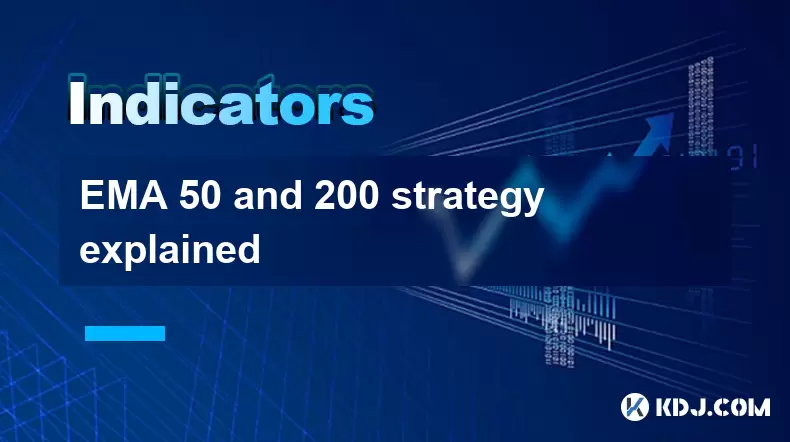-
 Bitcoin
Bitcoin $119,448.2396
0.27% -
 Ethereum
Ethereum $2,992.9919
0.78% -
 XRP
XRP $2.9074
1.58% -
 Tether USDt
Tether USDt $1.0001
0.00% -
 BNB
BNB $687.9097
-0.40% -
 Solana
Solana $161.5804
-0.47% -
 USDC
USDC $0.9998
0.01% -
 Dogecoin
Dogecoin $0.1948
-2.10% -
 TRON
TRON $0.3013
-0.08% -
 Cardano
Cardano $0.7286
-3.16% -
 Hyperliquid
Hyperliquid $47.3153
-3.81% -
 Stellar
Stellar $0.4543
-9.79% -
 Sui
Sui $3.8809
5.63% -
 Chainlink
Chainlink $15.6262
-0.55% -
 Hedera
Hedera $0.2368
-5.31% -
 Bitcoin Cash
Bitcoin Cash $501.2030
-0.80% -
 Avalanche
Avalanche $21.0650
-1.43% -
 UNUS SED LEO
UNUS SED LEO $9.0006
-0.39% -
 Shiba Inu
Shiba Inu $0.0...01310
-1.90% -
 Toncoin
Toncoin $3.0040
1.56% -
 Litecoin
Litecoin $93.8936
-1.20% -
 Monero
Monero $341.8918
1.27% -
 Polkadot
Polkadot $3.9087
-3.05% -
 Uniswap
Uniswap $8.9599
4.78% -
 Dai
Dai $0.9999
0.02% -
 Ethena USDe
Ethena USDe $1.0005
-0.02% -
 Bitget Token
Bitget Token $4.3954
-0.14% -
 Pepe
Pepe $0.0...01207
-2.26% -
 Aave
Aave $314.5223
1.72% -
 Bittensor
Bittensor $408.6988
2.76%
EMA 50 and 200 strategy explained
The EMA 50 and EMA 200 crossover strategy helps crypto traders identify bullish or bearish trends by signaling potential buy or sell opportunities when the shorter-term average crosses above or below the longer-term one.
Jul 12, 2025 at 03:35 pm

Understanding the EMA 50 and EMA 200 in Cryptocurrency Trading
In cryptocurrency trading, Exponential Moving Averages (EMAs) are among the most widely used technical indicators. Specifically, the EMA 50 and EMA 200 are essential tools for identifying trends and potential entry or exit points. These EMAs help traders assess momentum by giving more weight to recent price data compared to simple moving averages.
The EMA 50, which calculates the average price over the last 50 periods, reacts faster to price changes than longer-term EMAs. In contrast, the EMA 200 smooths out price volatility over a longer horizon, offering insight into the dominant trend. When combined, these two EMAs can form a powerful strategy that helps traders navigate volatile crypto markets.
How the EMA Crossover Strategy Works
One of the most popular strategies involving EMA 50 and EMA 200 is the crossover strategy. This method relies on observing when the shorter-term EMA crosses above or below the longer-term EMA to signal potential buy or sell opportunities.
- If the EMA 50 crosses above the EMA 200, it signals a bullish trend and may indicate a good time to buy.
- Conversely, if the EMA 50 crosses below the EMA 200, it suggests a bearish shift and could be a sign to sell or short.
This crossover, often referred to as the "Golden Cross" (bullish) or "Death Cross" (bearish), has historically provided reliable signals in major market movements, including those seen in Bitcoin and Ethereum price charts.
Setting Up the EMA 50 and 200 Strategy on Trading Platforms
To apply this strategy effectively, traders must first set up the EMA 50 and EMA 200 correctly on their preferred trading platform, such as TradingView, Binance, or MetaTrader.
- Navigate to the chart settings or indicators section.
- Add a new Exponential Moving Average.
- Set the period to 50 and choose a distinct color like green.
- Repeat the process for the 200-period EMA, selecting a different color like red.
- Ensure both EMAs are displayed simultaneously on the price chart.
Once configured, traders can visually monitor crossovers and align them with other confirming factors such as volume spikes or support/resistance levels before making trade decisions.
Filtering False Signals Using Additional Tools
While the EMA 50 and EMA 200 crossover strategy can be effective, it's not immune to false signals, especially during sideways or choppy market conditions. To reduce noise and improve accuracy, traders often incorporate additional filters:
- Use volume analysis to confirm that a breakout or crossover is supported by increased trading activity.
- Incorporate support and resistance levels to ensure trades align with key price zones.
- Combine with Relative Strength Index (RSI) to avoid entering trades in overbought (>70) or oversold (<30) conditions.
- Apply trendlines or Fibonacci retracement levels to enhance the context of the crossover signal.
These supplementary tools help traders distinguish between genuine trend reversals and temporary price fluctuations, thereby increasing the probability of successful trades.
Executing Trades Based on EMA Signals
Once a trader identifies a valid crossover supported by additional indicators, the next step is to execute the trade with proper risk management:
- Place a buy order when the EMA 50 crosses above the EMA 200, ideally after a pullback or retest of the moving averages.
- Set a stop-loss slightly below the recent swing low or under the EMA 200 to limit downside risk.
- Determine a take-profit level based on previous resistance zones, Fibonacci extensions, or a fixed risk-reward ratio (e.g., 1:2).
- Consider trailing the stop-loss to lock in profits as the trend progresses.
For short trades, reverse the logic:
- Enter a sell position when the EMA 50 crosses below the EMA 200.
- Place a stop-loss above the recent high or above the EMA 200.
- Target profits using similar methods as outlined for long positions.
Frequently Asked Questions
Q: Can the EMA 50 and EMA 200 strategy be applied to all cryptocurrencies?
Yes, this strategy is applicable across various cryptocurrencies including Bitcoin (BTC), Ethereum (ETH), Binance Coin (BNB), and altcoins. However, it tends to work better in assets with higher liquidity and clearer trends.
Q: Is the EMA 50 and EMA 200 strategy suitable for day trading?
While it can be adapted for intraday use, this strategy performs best on higher timeframes such as 4-hour or daily charts. Shorter timeframes may generate excessive false signals due to market noise.
Q: How do I adjust the EMA settings for different market conditions?
Traders can experiment with modifying the EMA periods slightly, but consistency is key. Some traders use EMA ribbons or add EMA 100 for confirmation. However, changing the core values of 50 and 200 may reduce the strategy’s effectiveness in capturing major trends.
Q: What should I do if the price keeps crossing back and forth between EMA 50 and EMA 200?
This typically indicates a sideways or consolidating market. It's advisable to avoid trading during such phases until a clear directional bias emerges. Using a trend filter like ADX (Average Directional Index) can help identify whether the market is trending or ranging.
Disclaimer:info@kdj.com
The information provided is not trading advice. kdj.com does not assume any responsibility for any investments made based on the information provided in this article. Cryptocurrencies are highly volatile and it is highly recommended that you invest with caution after thorough research!
If you believe that the content used on this website infringes your copyright, please contact us immediately (info@kdj.com) and we will delete it promptly.
- PI Coin MIA: Why Coinbase and Binance Aren't Budging
- 2025-07-15 20:30:12
- Bitcoin Profits Take a Dip: What's Behind the Drop?
- 2025-07-15 20:30:12
- TAC Mainnet & Native Token Launch: A New Era for Telegram?
- 2025-07-15 18:50:12
- Ripple's RLUSD Stablecoin Eyes EU Expansion: Luxembourg Launch Under MiCA
- 2025-07-15 18:50:12
- Whales, DeFi Tokens, and DOGE: A New Era of Crypto Investments?
- 2025-07-15 19:10:12
- Bitcoin Yield Takes Center Stage: Function's $10M Raise & Galaxy Digital's Bet
- 2025-07-15 19:10:12
Related knowledge

Advanced RSI strategies for crypto
Jul 13,2025 at 11:01am
Understanding the Basics of RSI in Cryptocurrency TradingThe Relative Strength Index (RSI) is a momentum oscillator used to measure the speed and chan...

Crypto RSI for day trading
Jul 12,2025 at 11:14am
Understanding RSI in the Context of Cryptocurrency TradingThe Relative Strength Index (RSI) is a momentum oscillator used to measure the speed and cha...

Crypto RSI for scalping
Jul 12,2025 at 11:00pm
Understanding RSI in the Context of Crypto TradingThe Relative Strength Index (RSI) is a momentum oscillator widely used by traders to measure the spe...

What does an RSI of 30 mean in crypto
Jul 15,2025 at 07:07pm
Understanding RSI in Cryptocurrency TradingRelative Strength Index (RSI) is a momentum oscillator widely used in cryptocurrency trading to measure the...

What does an RSI of 70 mean in crypto
Jul 13,2025 at 06:07pm
Understanding the RSI Indicator in Cryptocurrency TradingThe Relative Strength Index (RSI) is a widely used technical analysis tool that helps traders...

How to avoid RSI false signals in crypto
Jul 13,2025 at 06:21pm
Understanding RSI and Its Role in Crypto TradingThe Relative Strength Index (RSI) is a momentum oscillator used to measure the speed and change of pri...

Advanced RSI strategies for crypto
Jul 13,2025 at 11:01am
Understanding the Basics of RSI in Cryptocurrency TradingThe Relative Strength Index (RSI) is a momentum oscillator used to measure the speed and chan...

Crypto RSI for day trading
Jul 12,2025 at 11:14am
Understanding RSI in the Context of Cryptocurrency TradingThe Relative Strength Index (RSI) is a momentum oscillator used to measure the speed and cha...

Crypto RSI for scalping
Jul 12,2025 at 11:00pm
Understanding RSI in the Context of Crypto TradingThe Relative Strength Index (RSI) is a momentum oscillator widely used by traders to measure the spe...

What does an RSI of 30 mean in crypto
Jul 15,2025 at 07:07pm
Understanding RSI in Cryptocurrency TradingRelative Strength Index (RSI) is a momentum oscillator widely used in cryptocurrency trading to measure the...

What does an RSI of 70 mean in crypto
Jul 13,2025 at 06:07pm
Understanding the RSI Indicator in Cryptocurrency TradingThe Relative Strength Index (RSI) is a widely used technical analysis tool that helps traders...

How to avoid RSI false signals in crypto
Jul 13,2025 at 06:21pm
Understanding RSI and Its Role in Crypto TradingThe Relative Strength Index (RSI) is a momentum oscillator used to measure the speed and change of pri...
See all articles

























































































